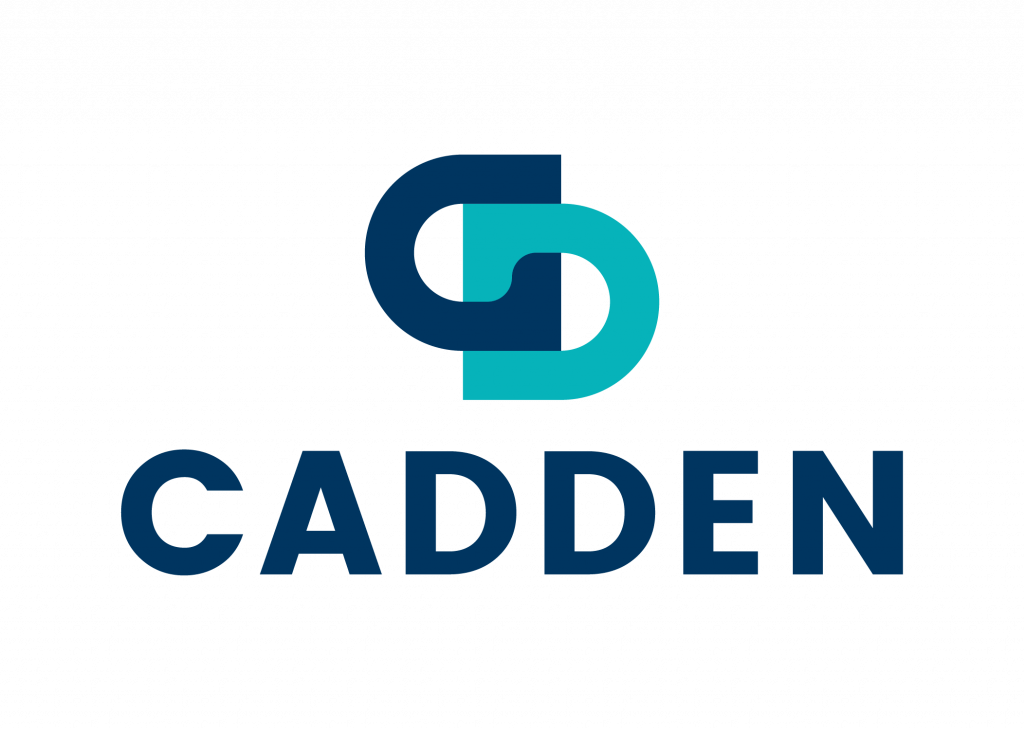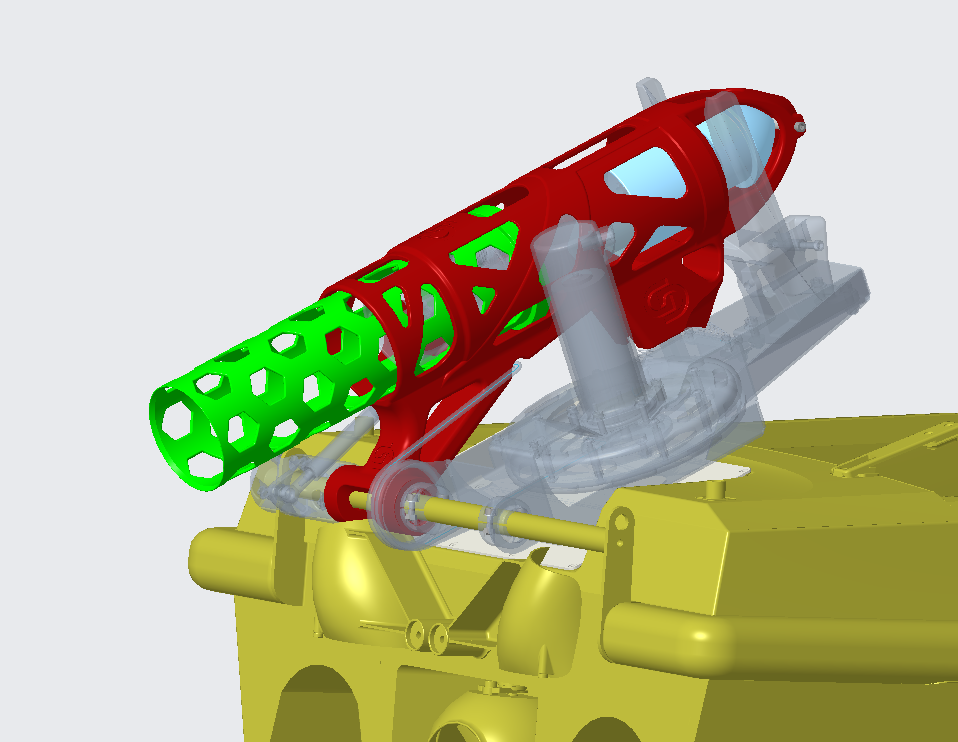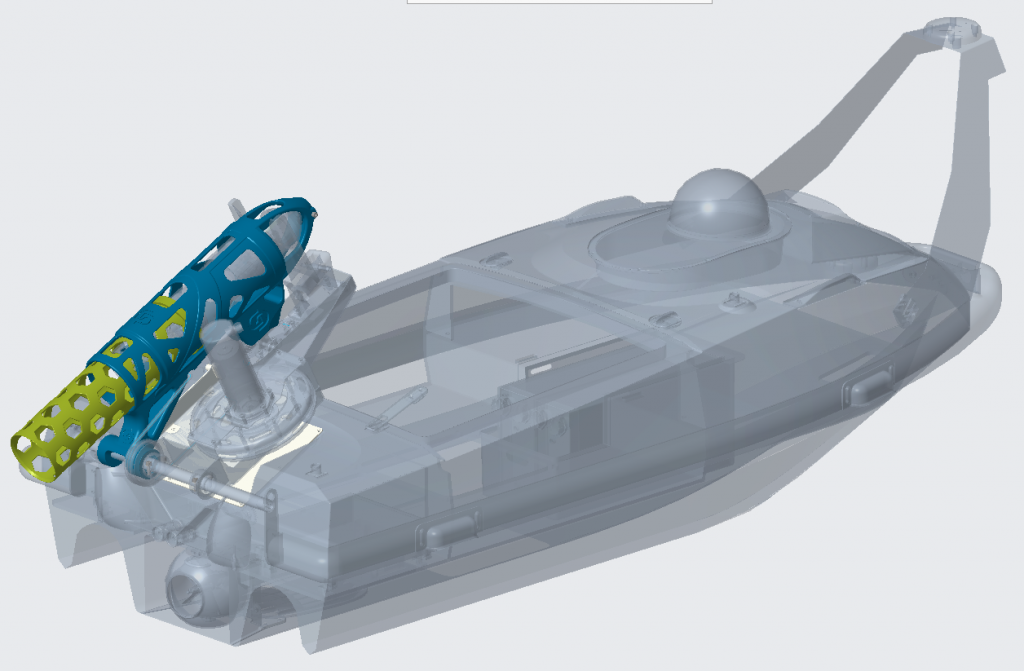Putting polypropylene to the test with Mécastyle for serial marine application
Additive manufacturing leader Ricoh 3D has partnered with mechanical engineering experts at Mécastyle to put its best-in-class polypropylene (PP) to the test as the ideal material for serial applications.
After meeting at an industry conference, Ricoh 3D and Mécastyle realised their shared vision in supporting customers move additive manufacturing beyond prototyping to the serial production of end-use parts.
Enrico Gallino, Material Specialist at Ricoh 3D, said: “We all knew instantly there was real strategic synergy here, so when Mécastyle approached us with the Cadden project we were both excited to see what our combined expertise could achieve.”
Background
Ocean Alpha SL40 is a highly sophisticated autonomous survey boat developed by marine application specialists Cadden. The 1.6 metre-long USV (Unmanned Surface vessel) is a unique hydrographic surveying system used for the detection and identification of objects and seabed classification, also providing a visual underwater and real time check to monitor works or site safety.
Cadden has been working with Mécastyle to successfully design and produce an innovative solution for locking, releasing and retrieving probes by deploying all the advantages of additive manufacturing (AM), more commonly known as 3D printing.
Using the material data and insight from their own test laboratory, Mécastyle has designed a series solution that achieves true ”Design for Additive Manufacturing” (DfAM).

The need
Developer, supplier and operator of geolocation and hydrography systems, Cadden, needed to equip its USV (Unmanned Surface Vehicle) with a system for locking, releasing and retrieving a probe pilot.
Thomas Pean, CEO of Mécastyle, continued: “We knew there was little information available about the long-term performance of AM material and so reached out to Ricoh for their expertise in the production of functional parts in unique materials. Combining our competencies in part design, engineering, and part production meant we were able to generate the same data that would be available through traditional manufacturing.”
Mécastyle could see the potential to harness additive manufacturing for end-use parts and serial production.
As this was a complex part produced in low volumes initially, the Selective Laser Sintering process was best suited due to the large build chamber of the Ricoh system, which meant the entire product could be printed in one piece without the need for assembly.
The solution
Combining Mécastyle’s expertise in mechanical engineering with Ricoh’s production capacities to meet Cadden’s needs.
- Functional Analysis
As with any mechanical project, functional analysis was the first phase carried out. This phase consists of identifying, prioritising and breaking down the main functions and constraints of the product to achieve the desired outputs. Conducted prior to the design, functional analysis constitutes the foundation of the project.
This functional analysis resulted in the choice of a polymer material, in response to the functions of mass constraint and resistance to the environment.
- The mass constraint function ruled out the use of dense metallic materials
- The constraint function of resistance to the aquatic environment eliminated the use of polymers with high moisture absorption or sensitivity to hydrolysis.
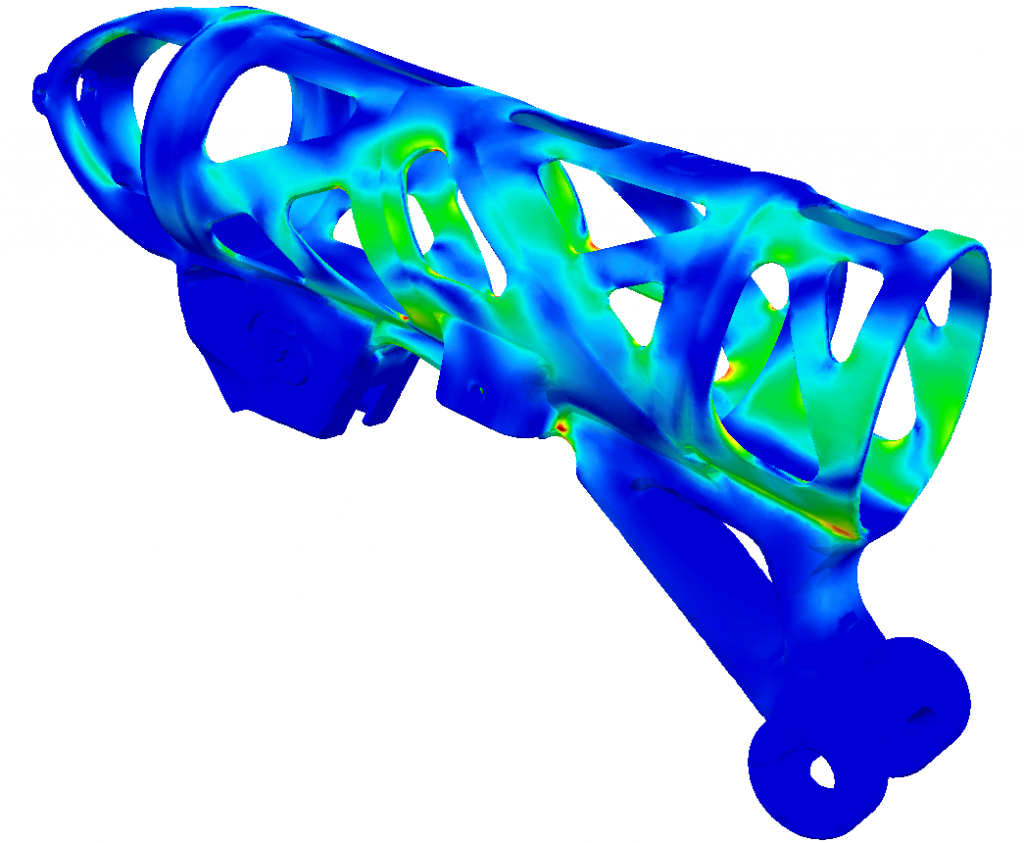
2. Fatigue Tests
The study of the fatigue strength potential of a part or structure consists in controlling the behaviour of the material from tests on specimens. These tests are carried out in the Mécastyle fatigue testing laboratory.
The characteristics resulting from these tests make it possible to predict the behaviour of the parts or products in accordance with the additive manufacturing process, and design around these parameters.
Polypropylene was found to perform in the fatigue tests, at a more cost-effective price point and, most importantly for the application, without absorbing any water. With PA12 an additional step was required to impregnate or paint the part, resulting in a longer and more expensive process.
Polypropylene was, therefore, deemed to be the most appropriate material for this application.
3. Cost – economic analysis
Cost being another constraint function, an economic analysis was made to determine the manufacturing process providing the best response to our client’s requirements(Design to Cost), i.e. low volume production (a few dozen units per year), manufactured on demand and without stock management. The two most relevant processes for this are machining and additive manufacturing.
Since additive manufacturing offers the greatest potential for function integration, this process proved to be the most technically and economically optimal solution for the Cadden project. The 3D printed part, produced in Ricoh SLS Polypropylene, proved to be almost half the cost of a machined solution.
Thomas commented: “In addition to the advantage of reduced production costs, AM allows parts to be manufactured on demand. This is a key benefit, as companies no longer need to stock parts and the resulting inventory costs are removed.”
4. Added value of Ricoh material
“The watertight properties of our polypropylene are unique on the market today,” Enrico explained. “This meansno post-treatment is required to make a watertight, aesthetic part, making the project viable for prototyping to series production.”
5. Design for Additive Manufacturing
To realise the full range of benefits of AM the Mécastyle solution was devised using ‘Design for Additive Manufacturing’ (DfAM), a design methodology entirely oriented towards additive manufacturing to include integration of functions, topological optimisation, fusion of parts to limit assembly, customisation and integration of the brand image.
By putting Ricoh’s polypropylene under cyclic stress, the component could then be designed using this mechanical information as a specification.
6. Calculation and simulation to improve time to market
In conjunction with this study phase, numerical simulation (Finite Element Analysis) enabled Mécastyle to anticipate the behaviour of the product as a function of mechanical stress. This stage allows us to quickly arrive at a digital definition that complies with the client’s functional specifications, resulting inasignificant reduction in time to market. It also reduces the number of functional prototypes to be tested on the bench, and thus lowers costs while optimising the time to market for serial parts.
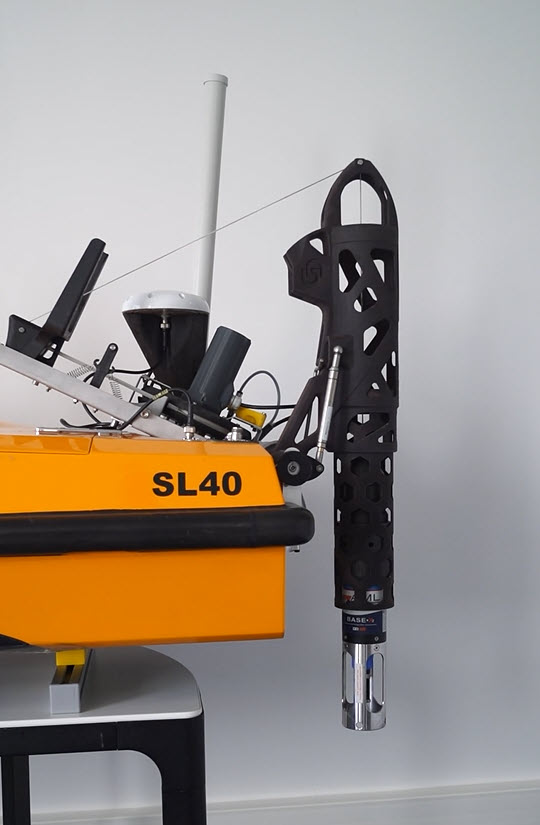
In detail:
Once the loads are known, simulations can be used to determine the mechanical stresses on the part and understand exactly what it needs to do as part of the final application. The scanning device is attached to a small bot on the vessel, which means when the bot moves there is mechanical stress on the part. These loads need to be taken into account in calculations to ensure the part doesn’t break or topple off the vessel. With these calculations, performance can be predicted upfront without testing, and is very efficient compared to the typical part development cycle which involves iterations of manufacturing, bench testing, modifications and re-manufacturing of prototypes for new tests – as well as the budget and time to market implications associated with this.
This physical data is then inputted into mechanical design and calculation software to optimise the design in terms of thickness, geometries and weight in order to generate further savings. Design optimisation produces organic shapes which remove any unnecessary material, but still ensures a visually pleasing design with the required performance capabilities. This combination of quantitative and qualitative data produces functional and cost-effective parts, which can still be manufactured thanks to the design freedom of additive manufacturing and selective laser sintering process in particular. The same performance simply wasn’t possible for this part with FDM, with support material removal also needing to be factored in as part of the process.
Selective Laser Sintering (SLS), also known as ‘powder bed fusion’, is considered the core technology of 3D print suppliers due to its productivity and wide range of engineering thermoplastics. In addition, the absence of a substrate makes it the ideal choice for the manufacture of complex shapes, such as the Cadden probe holder.
Delivery
Additive Manufacturing is typically much faster and more reactive than traditional methods, as bespoke machining and moulds do not need to be manufactured.
The Cadden product can now be created in six days, which would mean weeks with CNC machining.
Thomas concluded: “The advantages of additive manufacturing allowed us to offer our customer Cadden the best turnkey serial solution which met functional, technical and economic requirements.”


